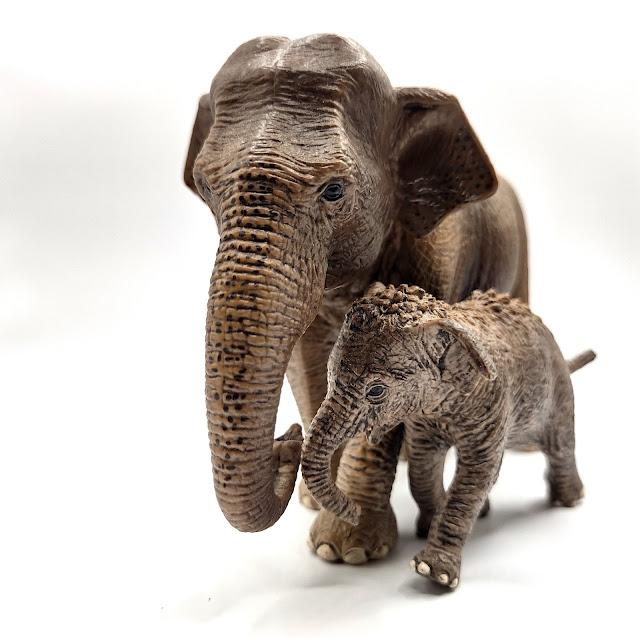The Indian elephant (Elephas maximus indicus) is one of three extant recognised subspecies of the Asian elephant and native to mainland Asia.
The Asian Elephant is the largest land animal in Asia and the second largest overall, after the African Elephant. Large males can reach heights of 2.75m (9ft) tall and weigh up to four tonnes. There are several differences between the Asian elephant and the African elephants. As well as being smaller, Asian individuals are stockier, and have smaller ears. They only have one finger-like extension at the end of their trunks while African individuals have two. Unlike the African elephant, generally only the male Asian elephant has tusks; females may possess small "tushes" that do not protrude through the skin.
Asian elephants can be found across southern and South-East Asia in a variety of habitats, from dry grasslands to tropical forests, but are always found in close proximity of water. They will graze and browse various types of vegetation, using their dexterous trunk to reach food, as well as smell and communicate with other elephants. Females form small groups along with their calves, whilst bulls are typically more solitary. Like all elephants, the Asian elephant is hunted for its ivory tusks.
 |
| Indian elephant bull (Papo) |
Indian elephants have smaller ears, but relatively broader skulls and larger trunks than African elephants. Toes are large and broad. Unlike their African cousins, their abdomen is proportionate with their body weight but the African elephant has a large abdomen as compared to the skulls.

Comments
Post a Comment